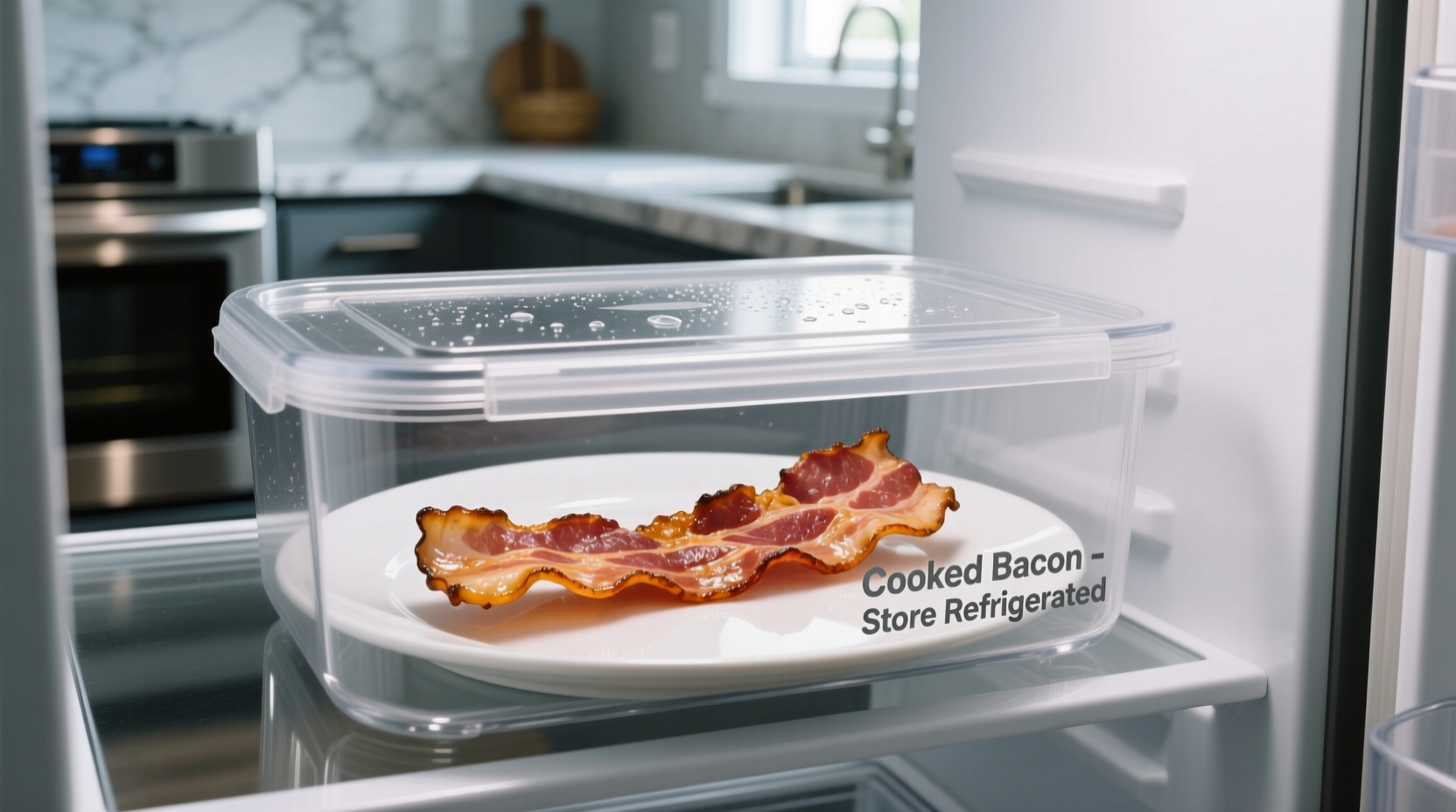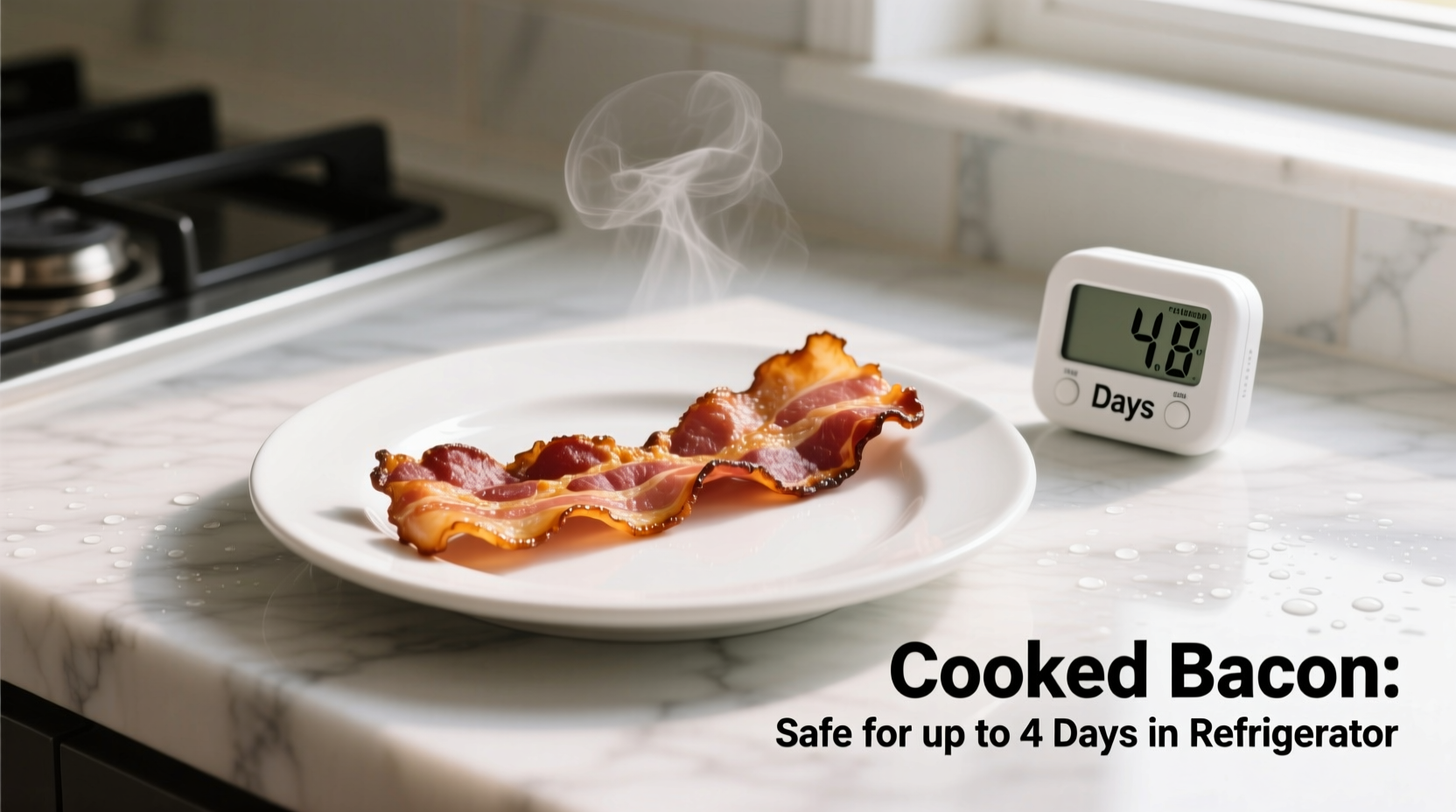Nothing beats the crispy perfection of freshly cooked bacon, but what happens when you've got leftovers? Understanding exactly how long cooked bacon is good in refrigerator conditions isn't just about preserving that perfect texture—it's a critical food safety matter. Improper storage of cooked meats like bacon can lead to foodborne illness from pathogens like Listeria monocytogenes that thrive in refrigerated environments.
As a culinary professional who's handled thousands of pounds of bacon in both restaurant and home kitchen settings, I've seen how proper storage techniques can extend freshness while maintaining safety. Let's explore exactly what you need to know about storing cooked bacon safely and effectively.
Proper Storage Techniques for Maximum Freshness
The clock starts ticking the moment your bacon finishes cooking. To maximize both safety and quality when storing cooked bacon in refrigerator conditions, follow these professional storage methods:
- Cool rapidly: Transfer cooked bacon to a plate lined with paper towels to absorb excess grease, then allow it to cool to room temperature within two hours (one hour if your kitchen is above 90°F/32°C)
- Airtight is essential: Store in rigid, airtight containers rather than plastic bags, which can develop micro-tears that compromise the seal
- Temperature matters: Keep your refrigerator at or below 40°F (4°C)—use an independent thermometer to verify actual temperature, as built-in displays can be inaccurate
- Layer with parchment: When stacking bacon strips, separate layers with parchment paper to prevent sticking and maintain crispness
According to the USDA Food Safety and Inspection Service, cooked meats should never be left at room temperature for more than two hours. Bacteria multiply rapidly between 40°F and 140°F—the "danger zone" where pathogens double in number every 20 minutes.
| Storage Method | Temperature | Maximum Safe Storage | Quality Notes |
|---|---|---|---|
| Refrigerator (standard) | 40°F or below | 4-5 days | Best texture and flavor retention |
| Refrigerator (vacuum-sealed) | 40°F or below | 7-10 days | Minimal moisture loss, extended crispness |
| Freezer (standard container) | 0°F or below | 2-3 months | Slight texture changes after 3 months |
| Freezer (vacuum-sealed) | 0°F or below | 6-8 months | Near-fresh quality when properly stored |
Recognizing When Cooked Bacon Has Spoiled
Even within the recommended how long is cooked bacon good in refrigerator timeframe, spoilage can occur if storage conditions aren't ideal. Don't rely solely on the calendar—use your senses to check for these warning signs:
- Visual changes: Slimy film on the surface, significant color change from pink to grayish-brown
- Odor test: Sour, fishy, or generally "off" smell (fresh cooked bacon should have a clean, smoky aroma)
- Texture issues: Excessive softness or mushiness rather than the expected crisp-tender quality
- Mold presence: Any visible mold growth means immediate disposal—don't attempt to cut away affected areas
The FDA Food Code emphasizes that when in doubt about food safety, the only safe choice is to discard questionable items. Unlike some foods where mold can be trimmed away, cooked bacon's high fat content allows pathogens to penetrate deeply even when surface mold isn't visible.

Reheating Stored Cooked Bacon Safely
Proper reheating is crucial for both safety and quality when using refrigerated cooked bacon. Follow these methods to restore that just-cooked perfection:
- Oven method: 375°F for 5-8 minutes on a wire rack over a baking sheet—best for maintaining crispness
- Air fryer: 350°F for 3-4 minutes—excellent for quick reheating with minimal texture loss
- Skillet technique: Medium heat for 2-3 minutes per side—ideal for incorporating into dishes
- Avoid microwaving: Creates uneven heating and often results in rubbery texture
Regardless of method, ensure reheated bacon reaches an internal temperature of 165°F (74°C) to eliminate any potential bacterial growth during storage. This temperature guideline comes from the Centers for Disease Control and Prevention recommendations for safely reheating cooked meats.
Creative Ways to Use Leftover Cooked Bacon
Instead of letting your perfectly cooked bacon go to waste, try these professional chef techniques for incorporating leftovers into new dishes:
- Bacon-infused oils: Steep cooled bacon strips in neutral oil for 24 hours, then strain for salad dressings or cooking
- Crumbled topping: Finely chop and use as a finishing element for soups, salads, or baked potatoes
- Bacon jam base: Combine with brown sugar, vinegar, and spices for a gourmet condiment
- Breakfast burrito component: Mix with scrambled eggs and cheese for a quick meal
When planning meals, consider cooking extra bacon specifically for future use—this how long cooked bacon good in refrigerator knowledge makes batch cooking both safe and practical. Just remember to cool and store properly immediately after cooking to maximize shelf life.
Special Considerations for Different Bacon Types
While the standard 4-5 day refrigerator guideline applies to most cooked bacon varieties, there are some important distinctions to note:
- Turkey bacon: Slightly shorter shelf life (3-4 days) due to lower fat content and different preservation methods
- Sugar-cured varieties: May develop stickiness faster but generally maintain safety within the standard timeframe
- Nitrate-free options: Often have shorter overall shelf life both before and after cooking
- Thick-cut bacon: Requires slightly longer cooling time before storage to prevent condensation inside containers
The World Health Organization emphasizes that food safety guidelines should be adjusted based on specific product characteristics and preparation methods. Always prioritize visual and olfactory inspection over strict adherence to time-based guidelines.











 浙公网安备
33010002000092号
浙公网安备
33010002000092号 浙B2-20120091-4
浙B2-20120091-4